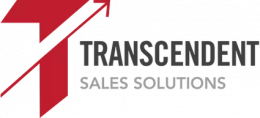Does Your Sales Process Generate Predictable Results?
We’ve all experienced it; our salesperson tells us about that big deal that’s as good as done. Their prospect is showing solid buying signals after they verified strong alignment and generated genuine interest.
But then… as the sales cycle progresses, there becomes a noticeable shift in buyer engagement, and your seller is left baffled as to why they seem to be losing traction. If they fail to get to the bottom of the prospect’s change in heart, they are sure to be ghosted!
For those of us with years of selling experience, we understand you can’t ‘win ‘em all’. But if your sellers’ deals are regularly stalling, it’s time to evaluate the sales process they are following.


For some sellers out there, I’ve seen their sales process navigated through post-it notes. For others, it’s a cookie cutter four-step process that came auto-loaded in the Customer Relationship Management (CRM) system they use.
Those who reap the benefit of sales predictability are usually the ones who have a sales leader that has taken the time to develop an intentional, customized sales process for their sales team to follow.
Here’s an example of the powerful impact a well-designed, adopted sales process can have.
.png)
Getting Started
- Reflect – If you’re starting from scratch in formalizing your sales process, start by researching what the typical buyer/seller interactions are leading up to the buying decision, whether the deal was won or not. A good way to do this is by coaching your salespeople to ask themselves, “What were the common phases I saw my buyer process through to form their decision?”. These will become the stages within your sales process.
- Easy – Use comprehensive, simple terminology that is common to your environment. It’s key to continually utilize your sales process language during 1-to-1 meetings with your sellers or during sales team meetings when you are focusing on sharpening sales skills. This will help your sales team master the steps quickly and turn the process into a game changer for success.
- Customize – If you use a Customer Relationship Management system (CRM), you’ll find it has pre-loaded sales stages. It’s important that you take the time to customize these stages by using the tips I shared above. Too often I meet with companies who have adopted cookie-cutter CRM stages as their method of guiding a prospect. This results in stalled deals because their salespeople miss accounting for the appropriate steps that correlate with their unique sales environment.
Building out the Sales Stage
- Define Objectives – After your sales stages have been established, clearly define the objective for each one. Be careful not to confuse activities you may do within a particular sales stage with its objective. Think of the objective as the core purpose for each stage within the overarching sales process. For example, calling a client is an activity, but confirming the client has budget is an objective.
- Key Activities & Information– Lay out the key activities you’ll focus on and/or key information you desire to collect from the buyer at each sales stage of your sales process. These items may take time to obtain, but the idea is that each piece of information enables you to get a better understanding of the buyer’s objectives, buying criteria, and motivators for taking action.

- Pass-through Gates – Now it’s time to pinpoint the one thing to achieve or collect in each sales stage that is more imperative than anything else. This is a key activity or piece of information that assures you’re on the best footing possible before you progress onto the next stage. For example, a pass-through gate could be verifying that you are interacting with the contact who has signing authority versus a support resource who has been assigned to collect bids.
Buyer/Seller Alignment
One of the largest ‘deal killers’ I see is when the seller is not aligned with their buyer. Too often the seller is moving too fast and is unaware that the buyer is lagging behind for whatever reason.

Predictability & Confidence


Dan Mahony
President
I am part of a national group of Senior Sales Leaders who collaborate to share insights like the examples shown in this article. We formed because of our shared passion to help business leaders exponentially grow their revenue.






